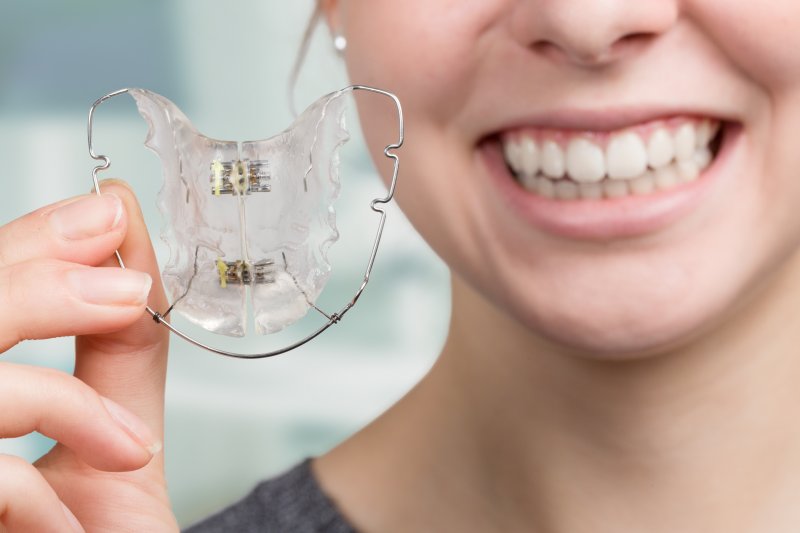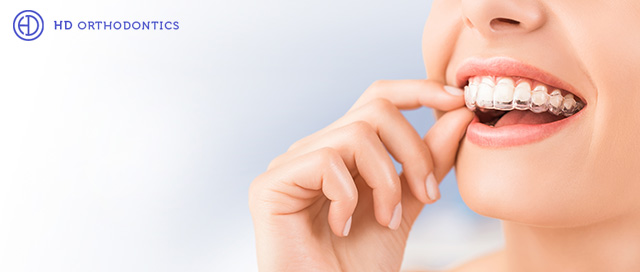Success Stories: How Invisalign Changed Lives and Improved Confidence
Success Stories: How Invisalign Changed Lives and Improved Confidence
Blog Article
Invisalign vs. Standard Dental braces: Which Alternative Is Right for You?
When considering orthodontic treatment, the option in between Invisalign and typical dental braces presents several essential aspects that warrant mindful examination. Invisalign supplies a discreet alternative with removable aligners, while conventional braces supply a much more noticeable yet efficient option for serious imbalance. Each choice includes unique advantages and downsides connected to visual appeals, comfort, treatment duration, and cost. Comprehending these subtleties is vital for making an educated decision that aligns with your personal choices and way of life. The inquiry stays: which option will best fulfill your orthodontic demands and assumptions?
Review of Therapy Choices

In contrast, conventional dental braces include steel braces and cables that are adhered to the teeth. This method uses constant stress gradually to achieve placement. While efficient for complex orthodontic concerns, typical dental braces require routine visits for modifications and can present challenges in maintaining oral health as a result of the difficulty of cleaning up about cables and braces.
Both options have their values, and the choice typically rests on specific dental problems, lifestyle preferences, and individual conformity. Eventually, seeking advice from an orthodontic professional is critical for identifying the most ideal therapy plan tailored to private demands. Understanding the nuances of each choice can significantly influence the general success of orthodontic treatment.
Visual Considerations
A substantial aspect influencing the selection in between Invisalign and traditional dental braces is the aesthetic appeal each therapy provides. Invisalign aligners are crafted from clear plastic, making them practically unnoticeable when worn.
On the other hand, standard dental braces consist of metal braces and cables, which can be more recognizable. While innovations in orthodontic modern technology have resulted in the development of smaller sized braces and colored elastics, conventional braces still maintain an even more obvious account. For some people, the visibility of braces might discourage them from looking for required therapy.
Ultimately, the selection between Invisalign and traditional dental braces may pivot on personal choices relating to visual appeals. People who focus on discernment typically lean toward Invisalign, while those that are much less concerned concerning exposure might select conventional braces. Recognizing the visual implications of each alternative is important for making a notified decision that lines up with one's lifestyle and preferences.
Comfort and Convenience

In terms of comfort, Invisalign aligners are removable, enabling people to here appreciate their preferred foods without limitation and keep ideal dental hygiene. Brushing and flossing are streamlined, as the aligners can be obtained during these routines, whereas standard braces call for mindful navigating around brackets and wires.
In contrast, conventional braces necessitate normal changes, making them much less practical for those with hectic schedules. On the whole, the comfort and ease of Invisalign make it an appealing choice for lots of individuals looking for orthodontic therapy.
Therapy Period and Effectiveness
While both Invisalign and standard dental braces are effective in remedying dental misalignments, the period of therapy can vary significantly between the two alternatives. Generally, Invisalign therapy can take anywhere from 12 to 18 months, depending on the complexity of the case. The clear aligners function by progressively shifting teeth right into their wanted placements, and regular follow-ups with an orthodontist assistance make certain progression stays on track.
In contrast, traditional braces frequently call for a longer commitment, normally varying from 18 months to 3 years. This is due to their fixed nature and the usage of cables and braces, which can be extra efficient dig this for intricate situations and severe imbalances (Invisalign). The therapy effectiveness of standard braces is well-documented, as they enable specific modifications and greater control over tooth movement
Ultimately, the selection in between Invisalign and standard braces content may depend upon both the awaited therapy duration and the particular oral concerns available. Consulting with an orthodontist is vital, as they can supply tailored recommendations based upon private requirements, making sure the selected method straightens with wanted results and timeframes.
Cost Contrast and Insurance Coverage Options
Price plays a substantial function in the decision-making process for people considering orthodontic therapy, whether choosing for Invisalign or conventional dental braces. Generally, the expense of Invisalign arrays from $3,000 to $8,000, while conventional dental braces commonly cost in between $2,000 and $6,000. Elements influencing these expenses include the intricacy of the case, the period of treatment, and geographical area.
Numerous oral insurance policy strategies supply partial protection for orthodontic therapies, but the specifics can differ commonly. Generally, conventional dental braces might be more frequently covered by insurance plans compared to Invisalign, which some insurance firms classify as an aesthetic treatment.
Additionally, several orthodontic methods use versatile layaway plan, making both therapy alternatives extra available. Clients must ask about possible funding alternatives and discounts for in advance repayments. Examining the overall expense, consisting of insurance policy advantages and settlement plans, is crucial for making an informed decision that lines up with both visual choices and spending plan factors to consider.

Final Thought
In recap, the choice between Invisalign and conventional braces rests on numerous elements, consisting of visual choices, convenience, therapy period, and price. Invisalign offers a discreet, removable option that helps with oral hygiene and dietary flexibility, while conventional dental braces might be better for intricate oral issues and typically come with a reduced price point. Inevitably, assessment with an orthodontist is necessary to assess specific situations and identify the most appropriate therapy alternative for attaining optimal oral positioning.
When taking into consideration orthodontic treatment, the choice in between Invisalign and conventional dental braces provides several crucial elements that warrant careful analysis.Comparing Invisalign and typical braces discloses unique therapy choices for orthodontic correction.While both Invisalign and standard dental braces are efficient in correcting oral imbalances, the duration of therapy can vary substantially between the two alternatives.Cost plays a considerable duty in the decision-making process for people taking into consideration orthodontic treatment, whether deciding for Invisalign or traditional dental braces.In recap, the choice in between Invisalign and traditional braces pivots on several variables, including visual preferences, comfort, therapy duration, and expense.
Report this page